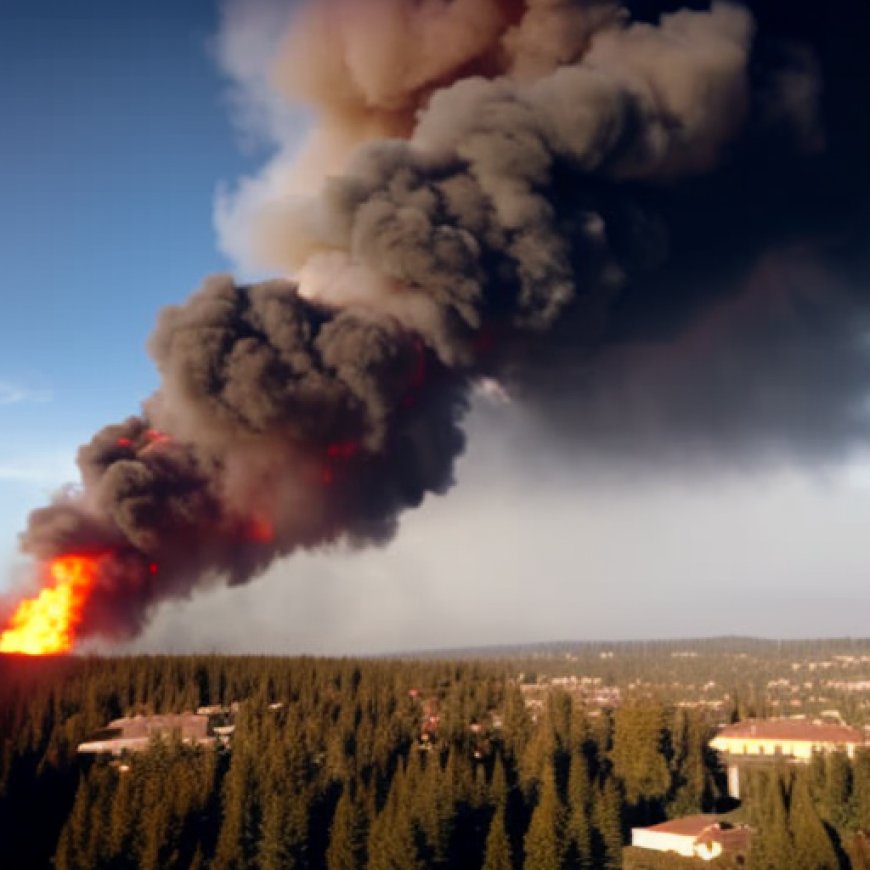Concern over unknown long-term effects of wildfire smoke
Concern over unknown long-term effects of wildfire smoke Ophthalmology Times


Impact of Wildfire Smoke on Eye Health
(Image Credit: AdobeStock/Erin)
With 2023 officially being the worst wildfire season ever in Canada, ophthalmologists are urging for more awareness on the long-term effects wildfire smoke can have on the eye.
Wind has pushed the wildfire smoke across Canada and several states in the United States, causing major dips in air quality – at one point New York City had the worst air quality on the planet due to the wildfire smoke.
There are currently over 1000 active wildfires burning in Canada, with 740 of them being labeled as “out of control” by the Canadian Interagency Forest Fire Centre (CIFFC). Over 5000 wildfires have started in Canada this year, according to the CIFFC.1
In 2023, Canada has seen over 13 million hectares (HA) burned by wildfire – Almost double the previous high of 7.1 million HA in 1995.1
Sustainable Development Goals (SDGs)
The impact of wildfires on eye health is closely linked to several Sustainable Development Goals (SDGs), including:
- SDG 3: Good Health and Well-being – Ensuring access to quality healthcare and promoting awareness of the long-term effects of wildfire smoke on eye health.
- SDG 11: Sustainable Cities and Communities – Addressing the issue of air quality in urban areas affected by wildfire smoke.
- SDG 13: Climate Action – Taking measures to prevent and mitigate the effects of wildfires, which contribute to climate change.
Expert Concerns
Eye health experts are concerned about the long-term impacts of wildfire smoke on eye health. According to Marisa Sit, MD, FRSCS, an ophthalmologist in Toronto, the smoke contains particulate matter and volatile organic compounds that can irritate the eyes.
Vancouver ophthalmologist Briar Sexton, MD, has observed eye symptoms such as dryness, itchiness, redness, pain, watering, and grittiness even before the smoke becomes noticeable. She emphasizes that the amount of exposure individuals are receiving in wildfire hotspots is much higher than in previous years.
There is still uncertainty about the lasting damage that wildfire smoke can cause to the eyes. Studies on pollutants with similar components to wildfire smoke have shown a link between cigarette smoke and increased risks of macular degeneration and cataracts.
Research on Wildfire Smoke and Eye Health
A review conducted on the wildfires in Australia in 2020 found strong evidence that wildfire smoke and other air pollution sources have harmful effects on the ocular surface, causing eye symptoms and changes to normal eye function. However, it is not yet known whether repeated or long-term smoke exposure carries an increased risk of ocular surface disease.2
To further understand the impact of wildfire smoke on the eyes, optometrist Suki Jaiswal in Sydney, Australia, is conducting studies on the short and long-term effects of smoke exposure on different parts of the eye and the recovery process. She is particularly focusing on groups like firefighters who are frequently exposed to smoke.
Jaiswal is using goggles that release small amounts of smoke to identify who is most at risk and whether any damage incurred is reversible. The goal is to establish guidelines for protecting the eyes and managing eye diseases caused by wildfire exposure.
Protecting Your Eyes from Wildfire Smoke
VSP Vision has provided recommendations to limit exposure to wildfire smoke and prevent eye irritation:3
- Use lubricating eye drops or artificial tears to keep your eyes refreshed and help get rid of dust and particles that can irritate the eyes.
- Avoid rubbing your eyes to prevent transferring dust and ash from your hands or face, which can scratch or irritate the eyes. Regularly wash your hands.
- Keep windows and doors closed to maintain clean indoor air. Running an air conditioner with the fresh air intake closed and a clean filter can help prevent bringing in additional smoke. If it’s too warm to stay indoors with closed windows and doors, seek shelter elsewhere.
- Avoid using anything that burns, such as fireplaces, gas stoves, and candles, to limit indoor air pollution. Vacuuming can also stir up dust, so consider using air filters if you have respiratory conditions.
Understanding the Toxicity of Wildfire Smoke
Wildfire smoke is a complex mixture of thousands of compounds, including solid matter, water vapor, and various gaseous compounds. The burning of different materials during wildfires makes the smoke more toxic than household fires.
Particulate matter (PM2.5 and PM10) is a key component of wildfire smoke. These fine particles can easily enter the nose, throat, and lungs, and even circulate in the bloodstream. Studies have shown that PM2.5 particles from wildfires can be up to 10 times more harmful than the same type of air pollution from other sources.4
References:
- Canadian Interagency Forest Fire Centere Inc. CIFFC. Accessed August 7, 2023. https://ciffc.net/
- Sukanya Jaiswal, Isabelle Jalbert, Katrina Schmid, Natasha Tein, Sarah Wang, Blanka Golebiowski, Smoke and the eyes: A review of the harmful effects of wildfire smoke and air pollution on the ocular surface, Environmental Pollution, Volume 309, 2022, 119732, ISSN 0269-7491, https://doi.org/10.1016/j.envpol.2022.119732.
- Vision Care. Protect your eyes from wildfire smoke. Accessed August 7, 2023. ophthalmologytimes.com

Join us, as fellow seekers of change, on a transformative journey at https://sdgtalks.ai/welcome, where you can become a member and actively contribute to shaping a brighter future.







